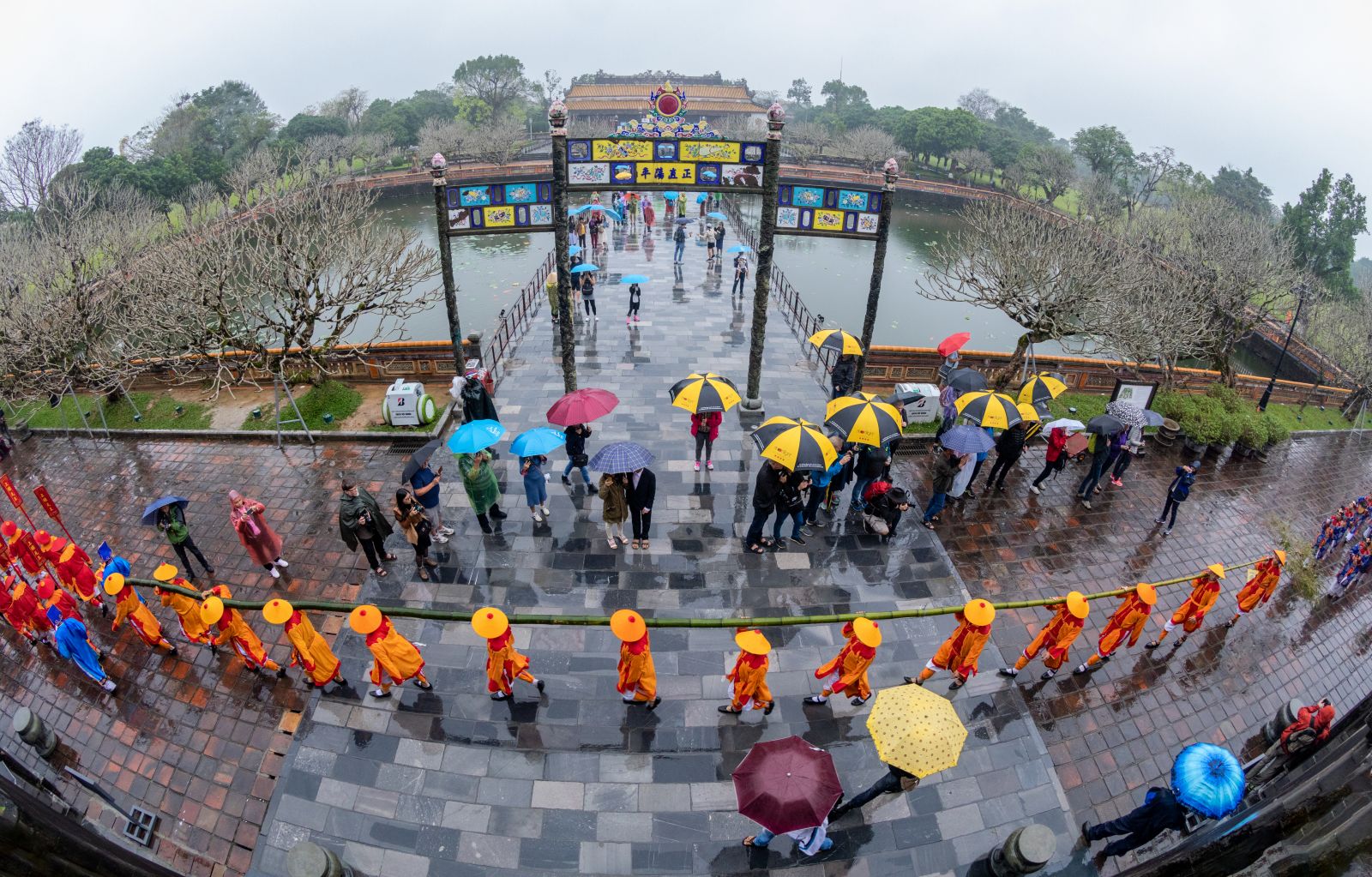
Hue Imperial City. Photo: Duc Hieu
The 19th century Hue Imperial Capital was the culmination of the monarchy of Vietnam. The Nguyen dynasty inherited the capital city of Phu Xuan at the time when the Nguyen Lords established the sovereignty of the two archipelagos of Hoang Sa (Paracel Islands) and Truong Sa (Spratly Islands) and expanded the whole land of Dang Trong (Inner Realm) in 1757.
Emperor Gia Long built the Hue Imperial Capital on the basis of the achievement of Nguyen Hue and the Tay Son insurgency, eradicating Dang Trong - Dang Ngoai (Outer Realm) in the summer of 1786 and then defeated the Qing army in early 1789. Phu Xuan capital during Tay Son marked the renaissance of the nation's culture and the power of the nation after defeating the Siamese and Qing forces.
Inheriting the achievement of building Phu Xuan capital in the Tay Son period, Emperor Gia Long still chose Hue as the capital on the basis of unified territory and government, the sovereignty over borders and islands had since been strengthened; the state and people's life management system were constantly improving and completing, and the national culture and education were cared for and developed.
This was also the place where many new architectural works were built at the national level with the inclusion of many architectural achievements of building walls and palaces of the world, including the citadel, palaces, tombs, pagodas... with a fascinating landscape; giving Hue a unique architectural style, a unique culture including: cuisine, costumes, houses, music, theater, festivals, lifestyle and belief...
"Hue Imperial Capital in the nineteenth century" is the first conference on this topic, with many published research results on the value of Hue's ancient capital heritage in its peak on many aspects: architecture, landscape, politics, military, culture and society... to contribute to the overall identification of Hue Capital in the nineteenth century.
Speaking at the conference, Vice Chairman of the Provincial People's Committee Phan Thien Dinh emphasized: “Hue Imperial Capital in the 19th century has become a world cultural heritage with a variety of genres: tangible, intangible and memory. It is a pride not only for the people of Thua Thien Hue but also for the whole country and humanity. Research to explore the appearance, characteristics and position of Hue Imperial Capital in the nineteenth century is an urgent task for the Party Committee of Thua Thien Hue province in the task of implementing Resolution 54-NQ / TW of the Politburo."
By Minh Hien